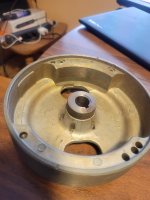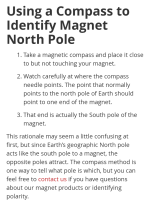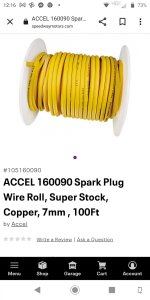Folks
I am looking for a bit of tech help. I'm refreshing a 1957 3hp model 3022 and would like to re-magnetize the flywheel as the secondary voltage is a bit low at idle. I have done this several time on Model Ts and have a magnetizer that will work. What I need to know is the orientation of the magnet poles in the fly wheel. All of my test magnets are too strong to get reliably readings. I have attached a pic of the flywheel can you markup the location of the N & S poles?
Greg
I am looking for a bit of tech help. I'm refreshing a 1957 3hp model 3022 and would like to re-magnetize the flywheel as the secondary voltage is a bit low at idle. I have done this several time on Model Ts and have a magnetizer that will work. What I need to know is the orientation of the magnet poles in the fly wheel. All of my test magnets are too strong to get reliably readings. I have attached a pic of the flywheel can you markup the location of the N & S poles?
Greg




